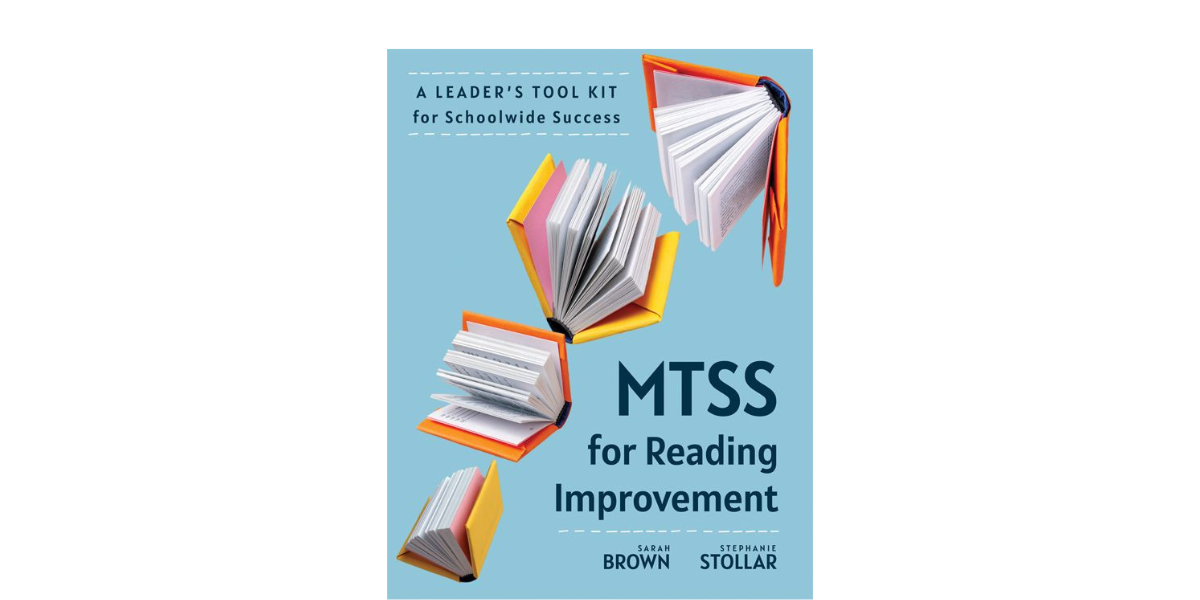My Triangle is Upside Down

Every couple of months I hear this phrase …my triangle is upside down… and I am reminded of the need to clarify the tiered systems of support represented by the triangle graphic used in MTSS.
When people say their triangle is upside down, they mean they have more students who are at risk than who are on track. But the three-tiered model is about instruction, not students. There are no Tier 1 students, Tier 2 students and Tier 3 students, only Tier 1 instruction, Tier 2 instruction, and Tier 3 instruction. Understanding the three-tiered model and the purposes of universal screening can provide the mechanisms for turning things around.
The Three-Tiered Model
The three-tiered model is about prevention of reading failure. The tiers describe a system of increasingly intensive instructional supports that cause all students to reach grade-level reading expectations. The tiered model provides a framework for efficiently using data to match student needs to the least intensive instruction necessary to get the maximum benefit in student outcomes.
Depicted as the largest section at the base of the triangle graphic, the Tier 1 system of support represents primary prevention of reading failure. This system involves the differentiated supports provided to all students in the general education classroom. The Tier 2 system of support is conceptualized as secondary prevention of reading failure. Tier 2 supports are provided in addition to, not instead of, Tier 1 instruction, for the purpose of accelerating learning for the students who are at risk after receiving effective Tier 1 instruction. The Tier 3 system of support is described as tertiary prevention of reading failure, and includes the most individualized and intensive supports needed by the few students who are at risk for or are experiencing reading difficulties.
Students who are at risk for reading failure, or who are already struggling readers, typically need more time spent on reading instruction that is more explicit, supportive and delivered in a smaller group. Intensive intervention supports at Tiers 2 and 3 require resources such as people, materials, and time. Intervention systems represented by the sections at the top of the triangle rest on the solid foundation of effective classroom reading instruction. By meeting the needs of the majority of students through effective Tier 1 instruction, resources can be reserved for the students who need additional and more intensive supports.
The Purpose of Universal Screening
In the MTSS model, universal screening of foundational reading skills is done three times a year for two reasons:
- early identification of students who are at risk
- evaluating the effectiveness of the Tier 1 instructional system
Universal screening assessments include benchmark goals representing the lowest acceptable score that predicts adequate reading in the future. All students should reach these minimum expectations, but what it takes to get them there will vary in intensity. The vast majority of students (around 80%) should reach the benchmark goals with effective Tier 1 instruction alone – no additional intervention. Some students will need Tier 1 plus Tier 2 intervention to reach the goals. And a few students will need Tier 1 plus very individualized and intensive Tier 3 intervention to reach the goals. These are the concepts represented by the triangle graphic.
The goal is not to have 80% of students score at benchmark, 15% below benchmark and 5% well below benchmark. The goal of early reading instruction is to get 100% of students to the minimum expectations of the benchmark goals. The first step toward that goal is to make sure regular classroom reading instruction is used as an opportunity to maximize reading outcomes and reduce risk. When at least 80% of students score at benchmark through Tier 1 instruction alone, intervention resources can be devoted to getting the remaining 20% of students to the goals.
If less than 80% of the students score at benchmark, the grade level team can analyze the fit between the needs of the students and the instruction provided in Tier 1, rather than assigning students to interventions. Intervention systems can become overwhelmed and ineffective when they are used to attempt to support 40%, 50% or 60% of the students in a grade level. Using screening data to reflect the health of the Tier 1 reading instructional system is a powerful, but often overlooked, step toward improving reading outcomes.
Universal screening data provide rich information on the skills students have and don’t yet have, how much time to spend on teaching those skills, and how to group students for classroom reading instruction. Students spend most of their instructional minutes allocated to reading in the regular classroom; therefore, classroom reading instruction in Tier 1 offers the best opportunity to meet student needs. No intervention, no matter how powerful, can make up for classroom reading instruction that is not matched to the needs of students that were identified during universal screening.
Maximizing the opportunity to prevent reading failure by aligning the needs of your students to instruction in the general education classroom will keep your triangle right side up.

Dr. Stephanie Stollar is the founder of Stephanie Stollar Consulting LLC and the creator of The Reading Science Academy. She is a part-time assistant professor in the online reading science program at Mount St. Joseph University, and a founding member of a national alliance for supporting reading science in higher education.
You can follow Stephanie Stollar Consulting and the Reading Science Academy on Facebook, YouTube, Twitter, Instagram and LinkedIn, and contact her at [email protected].
⭐️ Get Dr. Stollar's free resources on the science of reading here! →


